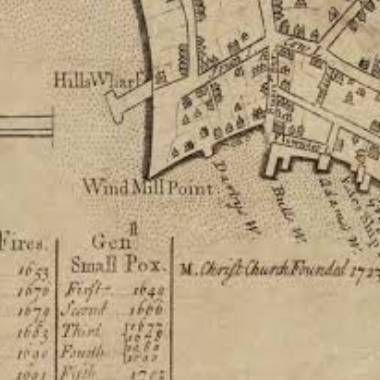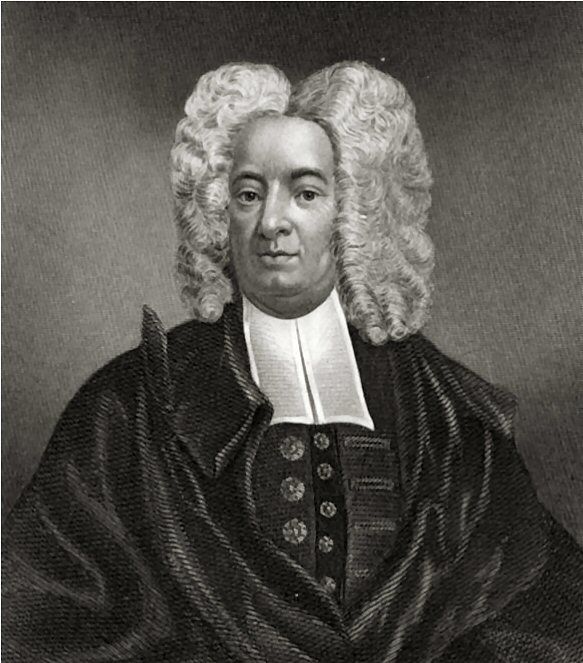Boston’s Smallpox Epidemic: 18th C. Quarantine and Inoculation

By Samuel Zeiberg Boston in the early 1720s was a town in the midst of an epidemic. Brought to Boston on a ship from the carribean in early 1721, the disease referred to as Smallpox had swept through the town. By 1722 over half of the city’s populace of 11,000 had fallen ill to Smallpox
Boston in the early 1720s was a town in the midst of an epidemic. Brought to Boston on a ship from the carribean in early 1721, the disease referred to as Smallpox had swept through the town. By 1722 over half of the city’s populace of 11,000 had fallen ill to Smallpox, and ultimately at least 800 Bostonians died due to this disease. Until this point in time, the only known remedy for Smallpox was to quarantine the infected individuals in their homes, with the hope that this would prevent the spread of the disease. For Boston at this time, quarantine was not an effective enough solution, and people sought alternative and new methods of treating this virus. One such man was Puritan minister and scientist Cotton Mather. Known as a pillar of the community — though not without his detractors — Cotton Mather suggested something that changed the fate of Boston, and ultimately the rest of the British colonies, the practice known as inoculation.
Inoculation is the practice of infecting someone with a less serious form of a virus so that the body builds up an immunity to it and will not be infected with it again. While it was practiced in other parts of the world, it was virtually unknown in Europe and the North American colonies. Cotton Mather was informed of the practice of inoculation by a man named Onesimus. Onesimus was an enslaved person brought to New England from West Africa, where he was purchased by Cotton Mather in 1706. In 1716 Onesimus told Mather about how his people had practiced inoculation. As Mather wrote in a letter:
“I had from a servant of my own an account of its being practiced in Africa. Enquiring of my Negro man, Onesimus, who is a pretty intelligent fellow, whether he had ever had smallpox, he answered, both yes and no; and then told me that he had undergone an operation, which had given him something of smallpox and would forever preserve him from it; adding that it was often used among the Guramantese and whoever had the courage to use it was forever free of the fear of contagion. He described the operation to me and showed me in his arm the scar which it had left upon him, and his description of it made it the same that afterward I found related unto you by your Timonius.”
In 1721 Cotton Mather knew he had to use the information he learned from Onesimus to help the beleaguered town of Boston. He was able to convince surgeon Zabdiel Boylston of the benefits of inoculation. Bolyston inoculated two enslaved people he owned, as well as his son, and after this was convinced of the success of inoculation. Mather and Bolyston were able to win over other ministers to their cause; however, their ideas were not met without pushback by a wary town.
Boston was not accepting of the idea of inoculation. This pushback was a mix of racist fears given Onesimus’s ethnicity, a fear that Smallpox was God’s punishment on the puritan city, as well as the fear that this operation would simply make more people sick. One leader of the anti-inoculation movement was Dr. William Douglass, one of the few licensed doctors in Boston at this time. Douglass spearheaded the attacks against Mather and others, noting that this idea had not been tested, and that — ignoring the testimony of Onesimus and other enslaved Africans — there had been no tests or studies done supporting inoculation.
The press participated in these attacks. The New-England Courantdebuted during this time, its publisher Ben Franklin’s older brother James. The Courantcalled those in favor of inoculation “Six Gentlemen of Piety and Learning, profoundly ignorant of the Matter.” These attacks also extended to physical altercations: one example includes when an infuriated Bostonian threw a bomb into a window of Mather’s house with a note attached stating “COTTON MATHER, You Dog, Dam You; I’l inoculate you with this, with a Pox to you.” Mather later wrote of this time, “The Destroyer, being enraged at the Proposal of any Thing, that may rescue the Lives of our poor People from him, has taken a strange Possession of the People on this Occasion.”
Mather, Boylston, Onesimus and others were ultimately vindicated. Boylston, having personally inoculated over 200 people, showed that the death rate amongst his patients was roughly 2%, significantly less than amongst those who were not inoculated. Overall, amongst those who were inoculated the death rate was one out of forty deaths, as compared to a one in seven chance without inoculation. Dr. Douglass himself was convinced of the results, and when smallpox arrived in Boston again he helped to vaccinate the people of Boston. In 1796 Edward Jenner was able to develop a vaccination for smallpox, and today smallpox is considered to have been eradicated by the World Health Organization.
Mather, Onesimus, and Boylston faced fierce opposition during a public health crisis. They worked tirelessly to help their community in a time of crisis, and worked to sway both the authorities and public opinion to their cause. Ultimately their success was a testament to their hard work, their willingness to go against public opinion, and the knowledge of Onesimus. Together they were able to save the lives of the people of Boston, and countless others across the world.
Samuel Zeiberg is a graduate of Suffolk University with a BS in History & Theatre Studies. Samuel has worked at various historic sites in Boston, including Old North Church & Historic Site, the Freedom Trail Foundation, and the Boston Tea Party Ships and Museum. He enjoys the chance to share the history of Boston with the public.
Bibliography
Blakemore, E., 2020. How An African Slave In Boston Helped Save Generations From Smallpox. HISTORY. Available at: [Accessed 15 April 2020].
Boylston, A., 2012. The origins of inoculation. Journal of the Royal Society of Medicine, 105(7), pp.309-313.
C., T., 1974. Cotton Mather Anguishes Over The Consequences Of His Son’s Inoculation Against Smallpox. American Academy of Pediatrics. Available at: [Accessed 15 April 2020].
Farmer, L., 1957. When Cotton Mather Fought The Smallpox | AMERICAN HERITAGE. Americanheritage.com. Available at: [Accessed 15 April 2020].
McHugh, J., 2020. A Puritan Minister Incited Fury By Pushing Inoculation Against A Smallpox Epidemic. washingtonpost.com. Available at: [Accessed 15 April 2020].
Najera, R., 2019. Black History Month: Onesimus Spreads Wisdom That Saves Lives Of Bostonians During A Smallpox Epidemic | History Of Vaccines. Historyofvaccines.org. Available at: [Accessed 15 April 2020].
Niederhuber, M., 2020. The Fight Over Inoculation During The 1721 Boston Smallpox Epidemic – Science In The News. Science in the News. Available at: [Accessed 15 April 2020]

